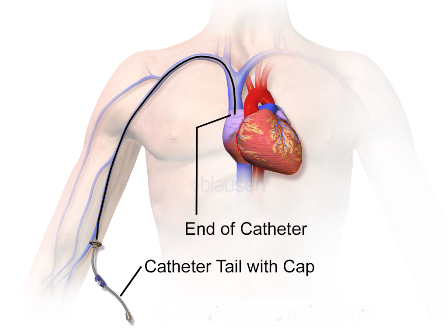Peripherally inserted central catheter (PICC) line insertion

A PICC line is a long, thin, flexible tube used for administering intravenous fluids and medication.
It is inserted into a peripheral vein, usually in the upper arm and then advanced to the superior vena cava, which sits above the heart. A PICC line is inserted if your veins have been damaged from previous chemotherapy treatment.